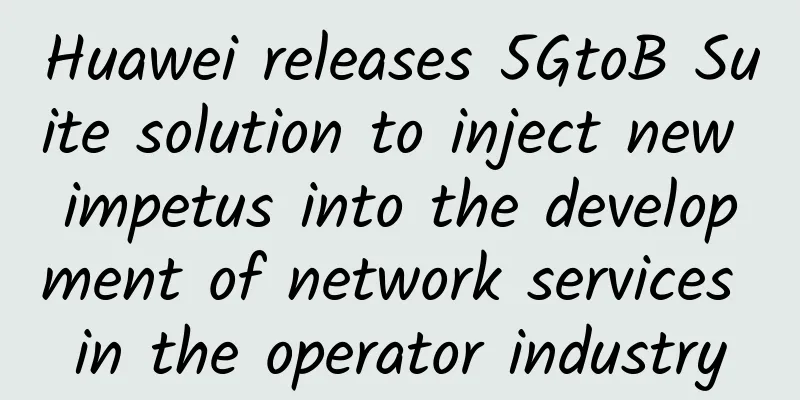Review of the five major mergers and acquisitions in the optical communications industry in 2018: vertical integration is the general trend

|
Looking back at the whole year of 2018, the optical communication industry has seen continuous M&A transactions, which can be said to have ushered in the largest M&A boom in recent years. The acquired manufacturers involved almost the entire optical communication field of optical fiber and cable, optical components, and optical equipment. From the perspective of the development trend of the entire industry, the most discussed emerging technologies in 2018 are 5G, Internet of Things, cloud services, data centers, etc. It is not difficult to see that so many mergers and acquisitions are precisely the early layout made by manufacturers in order to adapt to these development trends and seize the market lead. C114 has picked out five major deals from the mergers and acquisitions that took place in the optical communications industry in 2018, and reviewed the far-reaching impact of these five deals on the optical communications industry. 01Lumentum acquires Oclaro for $1.8 billion On March 12, U.S. time, Lumentum, the second largest company in the active device industry, acquired Oclaro, the third largest company in the industry, for $1.8 billion. The transaction was approved by China's antitrust agency on December 6 and completed on December 10. Alan Lowe, president and CEO of Lumentum, expressed his opinion on the acquisition that Oclaro's leading InP (indium phosphide) lasers and photonic integrated circuits, as well as related components and module capabilities, will complement and improve Lumentum's product portfolio. After the merger, although there are overlaps in business, Oclaro is more focused on providing solutions for telecom optical networks, enterprise networks, and data centers, and its expertise in these areas is higher than Lumentum. In addition, InP devices have unique advantages in meeting the needs of future 5G and data centers that require large amounts of data transmission, and InP is Oclaro's strength. Therefore, the industry generally believes that Lumentum will rely on Oclaro's advantages to complement its own product portfolio and strengthen its layout in the optical communications industry. C114 commented that Lumentum's acquisition of Oclaro is precisely to prepare for the huge market opportunities of 5G and cloud computing data centers in advance, and to complement its product portfolio through Oclaro's strengths in data centers and InP (indium phosphide). After the merger with Oclaro, Lumentum is expected to become a supplier with a more complete product portfolio in industries such as telecommunications, industry and consumer electronics. 02Corning acquires 3M's Communications Markets Division for $900 million In June, Corning announced that it had completed the acquisition of 3M's Communications Market Division for $900 million. Clark S. Kinlin, executive vice president of Corning's Optical Communications Division, said that as a leading supplier of optical passive products and solutions, this transaction will expand Corning's global market coverage and improve its entire product line and solutions. In an interview with C114, Zhou Xiaodong, Director of Sales and Business Operations of Corning Optical Communications China, said that the first reason for the acquisition of 3M's communications department was that 3M's customer base in Europe was very good, which greatly helped Corning expand its important customers outside North America and Asia. Another point was that 3M had a very good product line, which was a good complement to Corning. C114 commented that it can be heard from the tone of Corning's senior management that the acquisition is for the purpose of market expansion, and secondly to improve its product portfolio. In my opinion, market expansion is secondary, and more important is to improve the product line, because customers are more inclined to seek complete solutions. After the acquisition, it can also help Corning cover as many data centers, industry customers, operators, etc. as possible from the product side and the client side, and also prepare for the future 5G and large-scale data center applications. 03Infinera acquires Coriant for $430 million On July 23, U.S. time, Infinera, an American integrated photonic network equipment provider, announced that it would acquire open source network equipment provider Coriant for $430 million. It is understood that Coriant, as a world-leading optical network solution provider, was formed by the merger of Nokia Siemens (NSN)'s optical network division, Tellabs and Sycamore, focusing on the research and development of optical network communications and data communication systems. Infinera said that through this acquisition, the company will be able to serve nine of the world's top ten operators (five new ones) and six ICPs (three new ones), bringing economies of scale through a vertical integration model. At the same time, the business synergies brought by the acquisition will enable Infinera to save $100 million in operating expenses next year and $250 million in expenses by 2021. C114 commented that the next generation 5G network will transform from the original closed network architecture to an open network architecture. As an open hyperscale network solution provider, it has certain advantages in software automation and open disaggregation solutions. After this acquisition, Infinera will take advantage of this advantage to provide customers with more complete, higher performance and lower cost products and services through the economies of scale brought by the vertical integration model, helping large global network operators upgrade their networks. 04II-VI acquires Finisar for $3.2 billion On November 8, local time in the United States, II-VI, a global leader in engineering materials and optoelectronic components, spent $3.2 billion to acquire Finisar, a global technology leader in optical communications. After the news of the transaction was released, it attracted widespread attention in the optical communications industry, especially the intriguing move of passive acquiring active. At the same time, from the financial report, II-VI's revenue capacity is not as good as Finisar. II-VI is undoubtedly trying to win big with a small investment. Industry analysts said that this move is a layout for both parties in 5G, hyperscale data centers, consumer electronics and driverless sensors. At the same time, the product groups of both parties have almost no overlap and are highly complementary. After the vertical integration between the two, II-VI and Finisar will have the most complete product chain in the optical device industry, making them industry-leading optoelectronics and compound semiconductor companies. C114 commented that, first of all, II-VI's strategic goal is to fully integrate 5G. 5G is not just a revolution in the communications industry, but will be an important backbone pipeline for the Internet of Everything. In the next 3-5 years or longer, 5G will bring trillions of economic value. After the integration of II-VI and Finisar, they have the most complete product chain of active and passive optical devices. One company has taken care of the key links in the 5G industry chain, and II-VI has great ambitions to control 5G. Secondly, in the cloud service and data center market, Finisar has an absolute leading advantage in 25G and 100G data center optical modules, and also has the ability to produce next-generation 400G high-end optical modules. II-VI has the ability to use chips for optical modules. In this cooperation, the two parties will complement each other's strengths, pinch the beginning and end of the industry chain, shorten the time to market, and reduce costs on a large scale, thereby seizing market share. In short, in the future 5G and data center markets, the merger of II-VI and Finisar will have a profound impact on the entire optical device industry. 05Cisco announces acquisition of Luxtera for $660 million
On December 12, US time, Bloomberg reported that Cisco was negotiating to acquire optical chip manufacturer Luxtera. On December 18, US time, Cisco officially announced the acquisition of the manufacturer for US$660 million. The company is the second silicon photonics company acquired by Cisco. It is understood that Luxtera was founded in the United States in 2001. The company focuses on automated manufacturing, testing and packaging. By the end of 2016, the company had shipped more than 1 million 100G PSM4 optical modules for large-scale data centers. Judging from the shipment volume, Luxtera has become an important player in the field of silicon photonics. It is reported that Luxtera's technology, design and manufacturing innovations can significantly improve chip scale and performance while reducing costs. Cisco plans to integrate Luxtera's technology into its intent-based network portfolio, covering the enterprise, data center and service provider markets. In addition, some analysts believe that emerging distributed cloud, mobile and IoT applications are bringing unprecedented pressure to the existing communication infrastructure. Combining Cisco and Luxtera's capabilities in 100GbE/400GbE optics, chips and process technologies, customers can build future-oriented networks optimized for performance, reliability and cost. C114 commented that this is undoubtedly another transaction of complementary resources and vertical integration. David Goeckeler, executive vice president and general manager of Cisco's network and security business, said: Cisco's 2018 Visual Networking Index predicts that global Internet traffic will increase three times in the next five years. The bandwidth demand is huge. How to solve it? Combining Cisco's chip and optical capabilities with Luxtera's silicon photonics technology will help build the next generation of the most efficient network. In addition, Cisco also sees the huge market potential of silicon photonics technology. According to LightCounting, SiP technology will gradually gain market share and sales are expected to reach US$2.4 billion by 2023. summary From these mergers and acquisitions, it is not difficult to see that manufacturers are integrating vertical resources. The fact that there were so many mergers and acquisitions in the optical communication industry in 2018 also reflects that these manufacturers have seen the huge market opportunities brought by 5G, cloud computing, and data centers, and thus have improved and optimized their product portfolios through mergers and acquisitions, saving a lot of R&D costs, and more importantly, being able to provide customers with the most complete solutions in this field, thereby maximizing market share. In addition, 5G will bring about application scenarios of the Internet of Everything, and cloud computing data centers are also developing in a faster direction. It is difficult for a single company to cope with such a high-speed iteration of technological development trends, and it is inevitable to encounter technical bottlenecks. Therefore, vertical integration will be the future development direction. While speeding up the company's technological capabilities, it will also enhance the company's competitiveness in the industry market. At the same time, most of the mergers and acquisitions that took place in 2018 were between foreign manufacturers, and domestic manufacturers were basically unable to get involved. Foreign manufacturers have continued to merge and integrate various links in the industrial chain to achieve the strategic goal of continuing to occupy the high end of the industrial chain. For domestic manufacturers, whose technical capabilities are slightly inferior, they will face stronger competitors. For domestic manufacturers, they should indeed think about improving their technical capabilities through vertical integration and face challenges from the international market head-on. |
<<: Don’t know how to access the router system backend? Learn it in one step!
>>: Comprehensive analysis of the ten most critical technologies in the 5G network field
Recommend
In the face of the epidemic, 5G construction should not only be accelerated, but also increased!
Since the outbreak of the novel coronavirus pneum...
Hostodo: $24.99/year-2GB/20G NVMe/5TB/Las Vegas, Spokane, and Miami data centers
Hostodo has launched a February Special Deal prom...
Comprehensive Guide to Fiber Optic Boxes
Fiber cassettes are an essential part of a fiber ...
Huawei Cloud meets in a blessed place, connecting the present and future of Fujian
On September 20, 2017, the "If the Future Ca...
Qinghai University: Ruijie's "Beauty of Minimalism" Blooms Magnificently on the Smart Campus on the Plateau
At present, the informatization construction of c...
Google withdraws from 2021 MWC World Mobile Communications Conference
The annual MWC World Mobile Communications Confer...
Understanding IPv6 Standards in One Article
[[267679]] The IPv6 standard is mainly divided in...
Worth learning! 10 good habits of network administrators
【51CTO.com Quick Translation】I have been a comic ...
Behind the 13 consecutive fines: When will the operators’ “low-price bidding” stop?
According to people familiar with the matter, a c...
F5 helps Cegedim accelerate the digitalization of healthcare by ensuring data security and promoting DevOps applications
Today, digital transformation has become a global...
How to use ip command to manage network in Linux
The most basic part of Linux administration and t...
Understand the difference between disaster recovery and backup in data centers in three minutes
1. Introduction Sudden failures in data center op...
The biggest problem with 5G: not the technology, but the lack of “killer applications”
The global 5G progress forecast released by Credi...
No need for WiFi, can you surf the Internet with light? China releases the first visible light communication chip
No need for WiFi, can you surf the Internet with ...
The 5G coverage of the three major US operators was accused of false advertising: Verizon can only be connected 9.7% of the time
5G communication networks are reportedly faster t...









